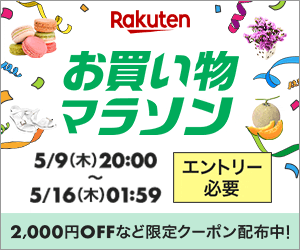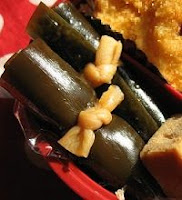Osechi is Japanese traditional New Year’s dishes.
Each dish contains meaning associated with the ingredient in it. I’ll introduce some of them.
○herring roe (kazunoko)
It stands for ‘kodakusan’ meaning many children
○sea bream (tai)
It is associated with ‘medetai’ meaning happiness or auspiciousness.
○cooked black soybeans (kuromame)
It wishes for ‘a diligent life’
○coiled kelp (kobumaki)
It stands for ‘yorokobu’ meaning happiness
○lobster or prawn (ebi)
It is for longevity because its body is bent like an old person's.
‘Osechi’ means ‘food offered on occasion ’.
 and share if you like it.
and share if you like it.
Advertisement

○herring roe (kazunoko)
It stands for ‘kodakusan’ meaning many children
○sea bream (tai)
It is associated with ‘medetai’ meaning happiness or auspiciousness.
○cooked black soybeans (kuromame)
It wishes for ‘a diligent life’
○coiled kelp (kobumaki)
It stands for ‘yorokobu’ meaning happiness
○lobster or prawn (ebi)
It is for longevity because its body is bent like an old person's.
‘Osechi’ means ‘food offered on occasion ’.
The beginning of Osechi goes back to Heian period. In those days osechi was provides for blessing happiness and health five times in a year at various festivities.
Today it only refers to the New Year's dishes .
Osechi is usually come in a lacquered boxes called jubako. The lacquered boxes consist of five or four tiers formally. But recently two or three tiers are usual.
Today it only refers to the New Year's dishes .
Osechi is usually come in a lacquered boxes called jubako. The lacquered boxes consist of five or four tiers formally. But recently two or three tiers are usual.
The number of family members is decreasing because of few children and so on so even one tier is usual.
Nowadays, the boxes made from lacquered boxes are rare and usually made of plastic or disposable materials.
But in recent years increasingly people purchase Osechi at grocery stores and department stores, or from Internet sites.
Click each post's and share if you like it.
and share if you like it.Advertisement











